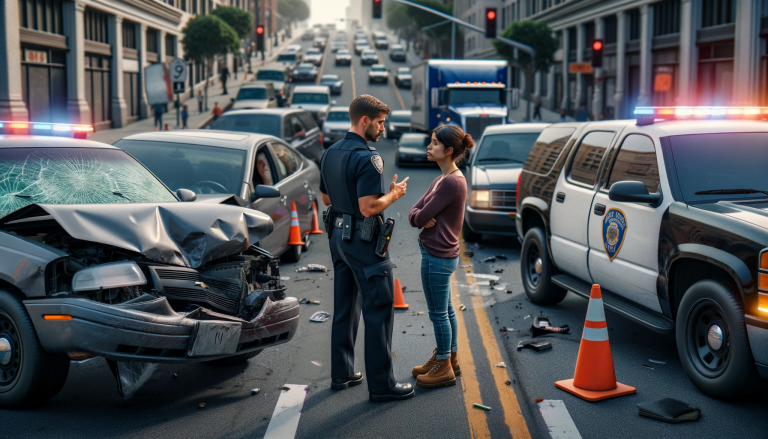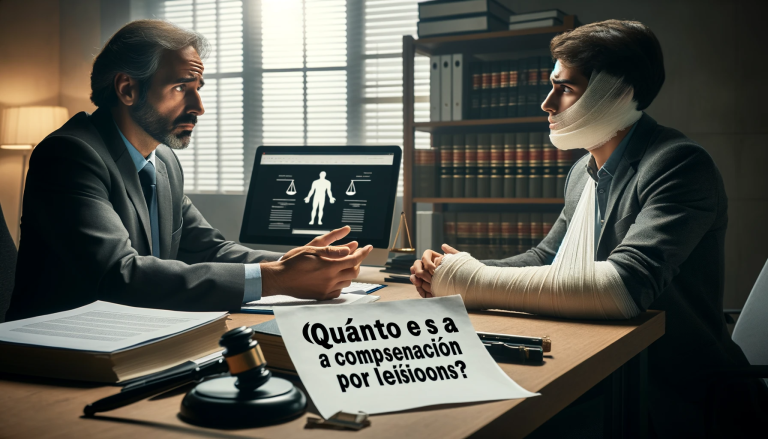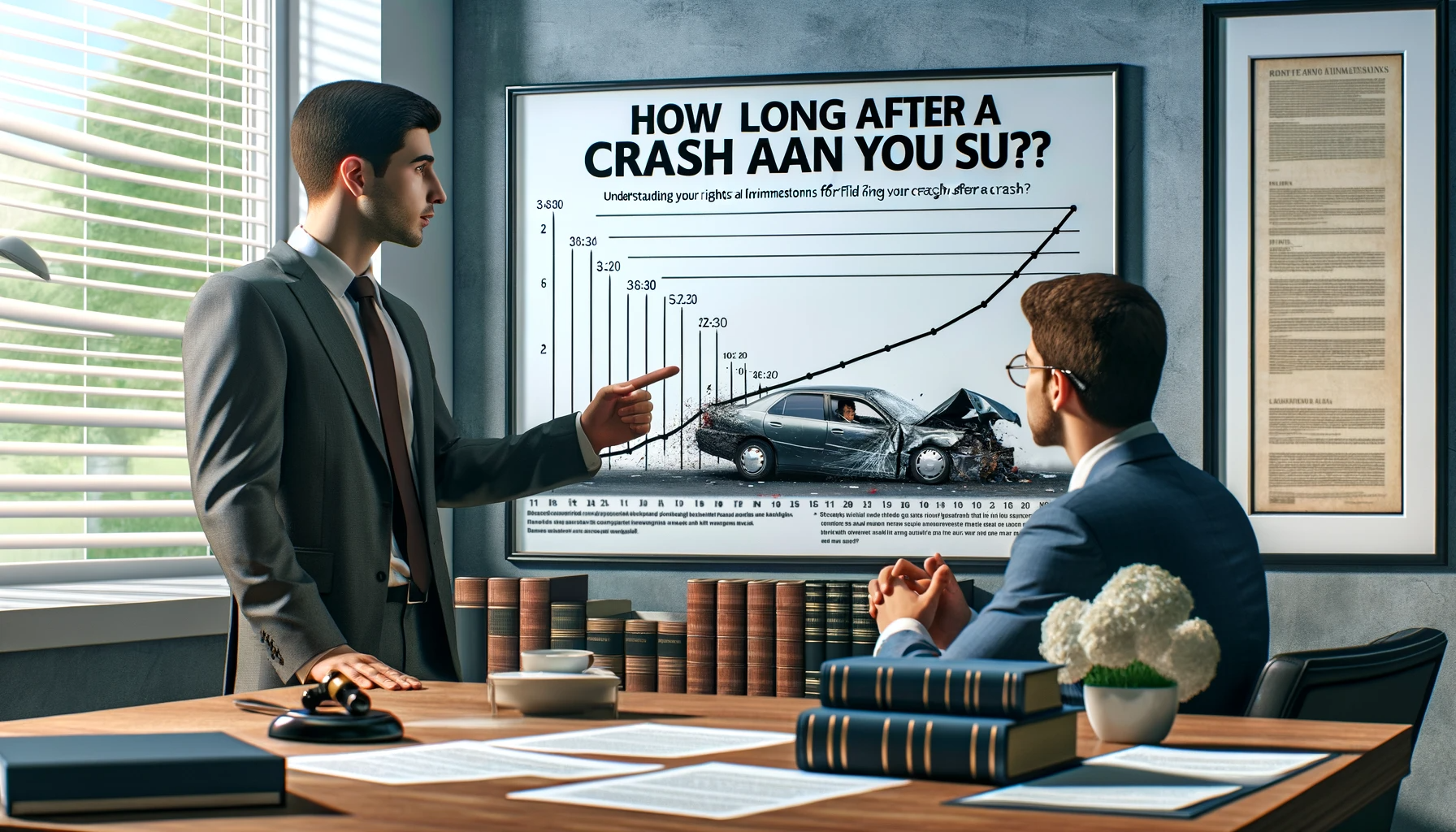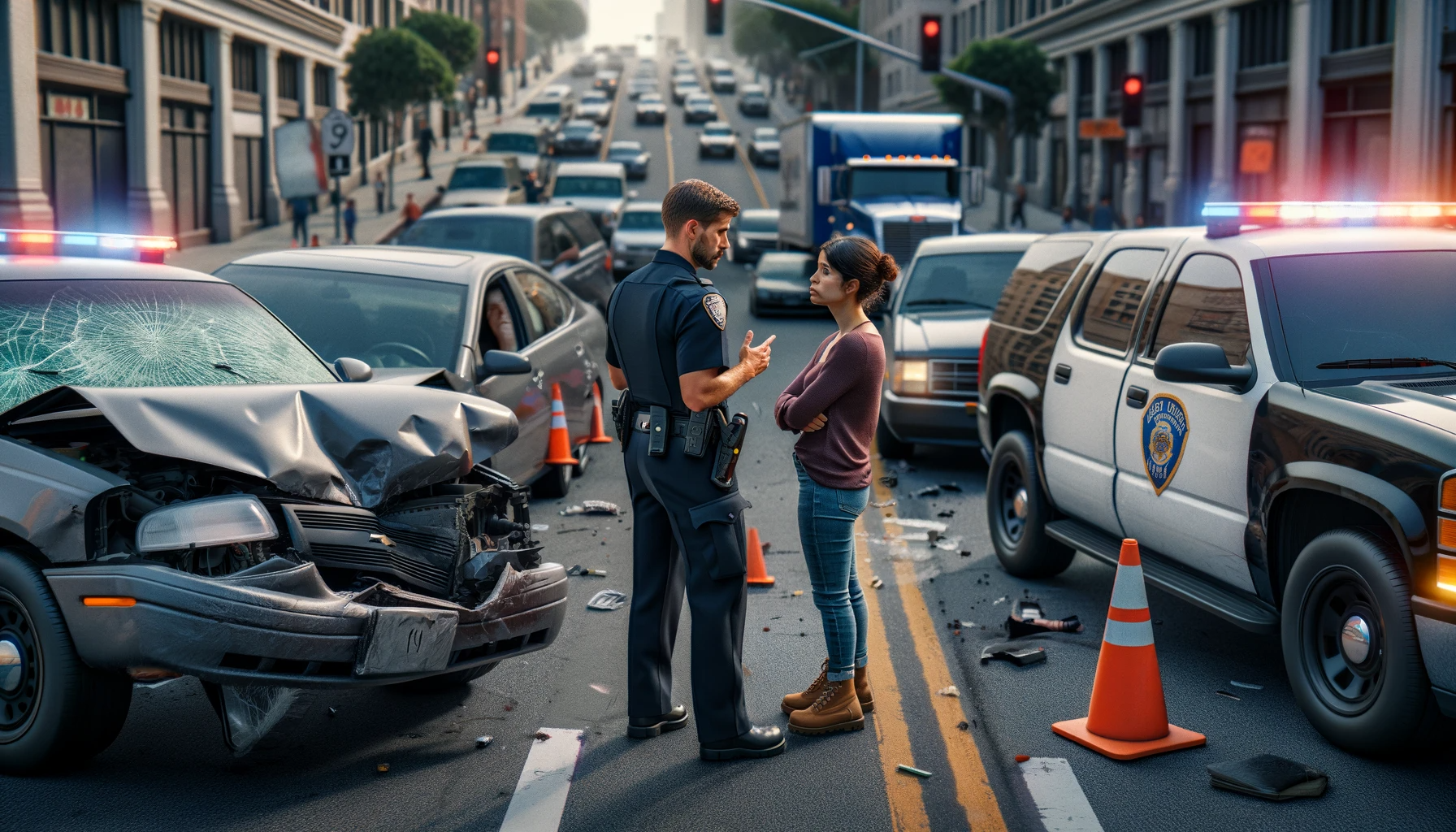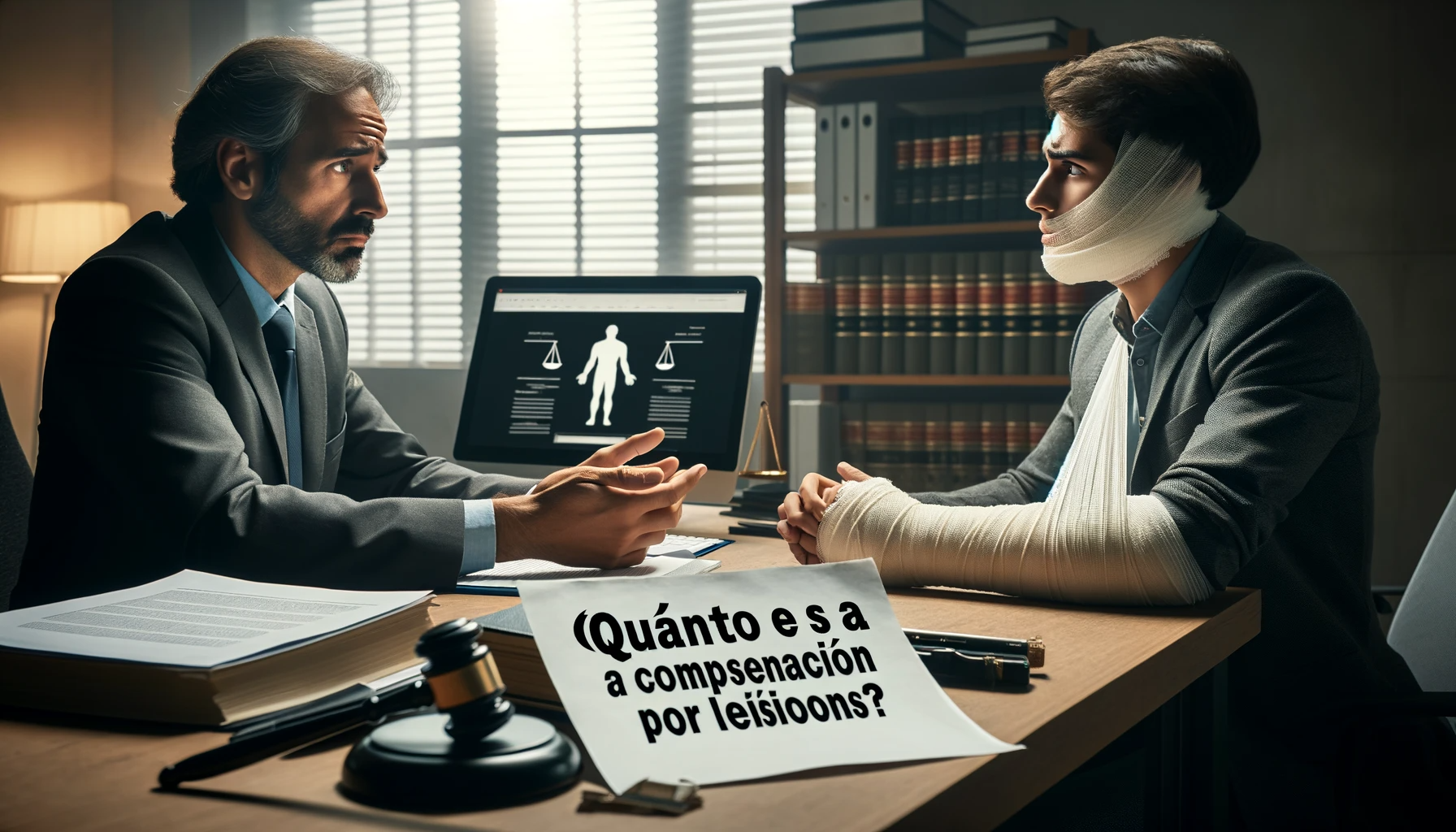Understanding the Concept of Statute of Limitations
Concept of Statute of Limitations
The concept of the statute of limitations refers to the legal timeframe within which a person or entity can initiate legal proceedings from the date of an alleged offense. This period varies depending on the type of dispute or legal issue and the jurisdiction in which the offense occurred. Once the statute of limitations has passed, a claim may be deemed void, and the right to sue may be lost.
Importance in Personal Injury Cases
In personal injury cases, such as a car crash, the statute of limitations is especially critical. It determines the window for a victim to file a lawsuit against the party liable for their injuries. If the lawsuit is not filed within this defined period, the plaintiff may lose the right to hold the defendant accountable for their actions legally.

Variables Impacting the Duration
Different factors can impact how long the statute of limitations lasts. The nature of the injury, the jurisdiction where the accident occurred, and the age of the injured party at the time of the accident are all factors that could potentially extend or shorten the timeframe.
Consequences of Not Following the Time Limit
If a lawsuit is initiated after the statute of limitations has expired, the defendant can use that as a defense in court. The judge can dismiss the case based on this defense, denying the plaintiff any recovery for their injuries or damages. It is essential for potential plaintiffs to understand these timelines to preserve their ability to seek compensation.
Tolled Statute of Limitations
In some cases, the statute of limitations can be 'tolled' or paused. This usually happens when the injury is not discovered until later, or if the injured party is a minor or mentally incapacitated. In such circumstances, the timer may start running from the discovery of harm or when the minor reaches the age of majority. This is another example of why it's critical to consult with a knowledgeable attorney who can accurately interpret and apply these rules.
Importance of Reporting a Crash Immediately
Securing Vital Information
After an accident, the scene and context of the crash may change rapidly. Important details such as vehicle positions, environment conditions, road signs, and physical injuries need to be documented immediately for accurate recollection later. Prompt reporting helps in preserving these vital pieces of information and providing a clear picture of the incident. It reduces the chances of key evidences being overlooked or forgotten, which could impact the outcome of a potential lawsuit.
Legal Obligations
Many jurisdictions have laws requiring accidents involving injuries, death, or significant property damage to be reported to the relevant authorities immediately. Failure to report can result in penalties, fines, or even criminal charges. Moreover, swift reporting assists law enforcement officers in conducting their investigation while evidence is still fresh, which can play a pivotal role in any subsequent legal proceedings.
Effect on Insurance Claims
Insurance companies generally require that incidents be reported immediately or within a set period, usually 24 to 72 hours. Failure to do so might present difficulties when trying to file a claim. Reporting the collision swiftly facilitates the claim process, maximizes your chances of achieving a fair settlement, and ensures you don't forfeit your right to claim due to untimely reporting.
Ensuring Accurate Medical Assessment
Crash-related injuries might not manifest immediate symptoms. Timely reporting mandates medical evaluations at the earliest, ensuring any such injuries are diagnosed and treated promptly. This not only supports your wellbeing but also establishes a clear link between the accident and your injuries, which is crucial for personal injury claims.
Preservation of Your Legal Rights
The statute of limitations, the time limit within which you can file a lawsuit after an accident, begins from the date of the accident in many cases. Delayed reporting might lead to a shortened time frame for legal action, potentially even causing you to miss the window entirely. Prompt reporting secures your right to seek redress through the courts and ensures the timeline for doing so is not compromised.
The Process of Filing a Lawsuit after a Crash
Understanding the Initial Steps
Before you take any steps towards filing a lawsuit, it's essential to properly document the accident. Acquire as much evidence as possible from the crash scene, including photographs and witness accounts. Report the accident to your insurance company and seek medical attention even if you believe your injuries to be minor. This not only ensures your safety, but these documents will serve as critical evidence should you decide to file a lawsuit.
Consulting with a Personal Injury Lawyer
Once you have gathered all pertinent information related to the crash, seeking legal counsel is advised. A personal injury lawyer can guide you through the process of filing a lawsuit after a car crash. They will help you understand whether you have a claim, what compensation you might be eligible for, and how long you have to file a lawsuit.
Filing the Complaint
The actual process of filing a lawsuit begins with drafting a complaint or petition. Your lawyer will prepare this document, which details your case against the defendant(s). It will include a factual background, any laws that apply to the situation, and how you've been harmed. Once the complaint is ready, it is filed in the court and served to the defendant.
The Discovery Phase
Following the filing of the complaint, the lawsuit enters the discovery phase. Here, both parties exchange information related to the case. This process helps each side understand the evidence and arguments they will face at trial. It may involve interrogatories (written questions), requests for documents, and depositions (oral testimonies under oath).
Seeking Settlement or Going to Trial
After the discovery phase, parties usually have a clearer picture of the strengths and weaknesses in their cases. At this point, there might be an opportunity to negotiate a settlement outside of court, which could save both parties time and money. If a settlement cannot be reached, the lawsuit will proceed to a trial where a judge or jury will make the final decision.
Determining Liability in a Crash
Understanding Liability in a Vehicle Accident
Determining liability in a crash is a critical first step when considering legal action after an accident. Liability refers to the legal responsibility one party has for the damage or injury caused in a collision. Someone must be at fault for the accident and understanding who that is, depends largely on the accident details and laws of the state where the incident occurred.
Evidence Gathering and Interpretation
To decide who is responsible for a car accident, certain pieces of evidence might be required. Generally, proof would include photos from the scene, statements from witnesses and police reports. Interpretation of this evidence is also important, as it may establish if any party violated traffic rules, leading to the incident.

Role of State Laws in Establishing Fault
Each state has its own set of laws related to motor vehicle accidents. Some states operate under "at-fault" laws, where the person responsible for causing the accident is liable for damages. In contrast, "no-fault" states require each driver's insurance company to cover their own losses, regardless of who caused the accident. Therefore, an understanding of the specific laws in your state is crucial.
Negligence and Its Role in Liability
Negligence is often key when determining liability. Negligence occurs when somebody fails to exercise the level of care expected of them, leading to an accident. To prove negligence, it must be shown that the defendant had a duty of care, breached that duty, and the breach caused the accident and resultant harm.
Shared Fault Situations
Finally, it's important to note that more than one party can share liability in a crash. This is known as comparative or contributory negligence, depending on your state. In these situations, the amount you can recover may be reduced by your percentage of fault in the accident.
Factors Influencing the Timeline to Sue
The Statute of Limitations for Car Accident Lawsuits
The primary factor determining your timeline to sue following a crash is the statute of limitations, which varies among jurisdictions. This refers to the maximum time after an event within which legal proceedings may be commenced. In some areas, it could be one year from the date of the accident, while in others, it could be two years or longer.
Discovery of Injury or Damage
In some cases, injuries or damages from an accident might not be immediately apparent. Certain jurisdictions employ a discovery rule, which allows the statute of limitations to begin only when the injury or damage is detected or reasonably should have been identified. Thus, this could extend the timeframe within which you can start legal proceedings.
Nature and Severity of Injury
The nature and extent of your injury could also influence the timeline to sue. More severe injuries may require extended treatment and rehabilitation periods, during which the victim may not be able to initiate a lawsuit. In such cases, jurisdictions might allow for tolling - a temporary pause on the statute of limitations - until the injured party recovers or reaches a certain degree of health stability.
Legal Process and Paperwork
Time needed to gather evidence, consult legal experts, and prepare necessary documents can further impact the timeline of a lawsuit. Neglecting these steps may negatively affect the success of a claim, so rushing into litigation without proper groundwork is generally not advisable.
Insurance Company Negotiations
Interactions with insurance companies may also affect the timeline to sue. It often takes time to negotiate with insurers, gather documents, and attempt resolution before resorting to litigation. If negotiations fail, initiating a lawsuit might become necessary, but this can again take additional time.
Exceptions to the Statute of Limitations
Discovery Rule
One significant exception to the statute of limitations lies in the "discovery rule." If injuries or damages were not apparent immediately after a crash, a victim may be allowed more time to file a lawsuit. For instance, if a hidden injury like cognitive impairment due to a head injury was identified months after the accident, the clock on the statute of limitations might start from the date of discovery of this condition.
Tolling for Minors
Another exception is made for minors involved in crashes. In many jurisdictions, the statute of limitations is "tolled" or paused until the minor reaches the age of majority, typically 18 years. Therefore, a child injured in a crash usually has more than the standard period to initiate a lawsuit after reaching adulthood.
Mental Incompetence
If a crash victim was mentally incompetent at the time of the accident and couldn't reasonably understand their right to sue, the statute of limitations may be tolled. Once the person regains mental competence, the countdown might start anew. This rule varies by jurisdiction and usually requires medical proof of incompetence.
Military Service
In some instances, individuals who are serving in the military at the time of the accident may have the statute of limitations paused. This is known as military tolling and allows litigants more time to file a lawsuit once their service is concluded.
Bankruptcy of Defendant
When the party at fault files for bankruptcy post-accident, it may affect the lawsuit timeline. Bankruptcy can put a temporary hold on all civil actions against the debtor, extending the victim's time to sue. However, this also depends heavily on the specifics of the bankruptcy case and jurisdictional rules.
Getting Legal Help: Connect with a Crash Attorney
Understanding the Importance of a Crash Attorney
When you’ve been involved in a crash, it's important to secure legal representation as soon as possible. A crash attorney or personal injury lawyer is a professional who specializes in cases related to car accidents. They understand all the legal complexities that surround such events and are ideally equipped to represent your interests. They can guide you through each stage of the legal process, helping to ensure that you receive fair compensation for any injuries or damages sustained.
Finding the Right Legal Representative
Choosing the right crash attorney is an essential part of this process. Start by doing your own research and compiling a list of potential attorneys who specialize in vehicular accidents. Look at their experience, case history, success rate, and customer reviews. Don't rush this decision; take the time to meet with a few lawyers, ask them about their practice and how they would handle your case. Pay attention to their communication style and level of comfort with your case.
What to Expect During the Initial Consultation
Most crash attorneys offer a free initial consultation to evaluate your case. During this meeting, they will review the details of the accident, any documentation you have, and ask questions to determine whether you have a strong case. This interaction also gives you a chance to ask questions and gauge whether you feel comfortable working with them.
Retaining a Crash Attorney
Once you decide on a lawyer, it's time to work out the details of your arrangement. Many crash attorneys work on contingency, meaning they only get paid if they win your case. Be sure to discuss this upfront, along with any other fees you may be expected to pay. After signing a contract, your attorney will officially represent you and guide you through the following steps of the legal process.
The Role of Your Crash Attorney in the Lawsuit
Once retained, your crash attorney will begin compiling evidence and building a case on your behalf. This can include gathering accident reports, medical records, witness testimonies, and any other pertinent evidence. They will handle all negotiations with the insurance company and represent you in all court proceedings. Having skilled legal representation can make a significant difference to the final outcome of your lawsuit.
Conclusion
In conclusion, the timeline for pursuing legal action after a car accident is a multifaceted process influenced by several critical factors. These factors collectively determine when and how you can sue for damages resulting from the incident. Let's delve deeper into the key elements that shape this timeline:
1. Statute of Limitations: The foremost factor impacting the timing of a lawsuit is the statute of limitations. This legal timeframe varies by state and sets a specific deadline within which you must file your lawsuit. Missing this deadline could result in the forfeiture of your right to sue. Therefore, it's imperative to be aware of your state's statute of limitations and adhere to it diligently.
2. Type and Severity of Injuries: Another pivotal consideration is the nature and seriousness of the injuries sustained in the accident. Some injuries may become apparent immediately, while others might manifest or worsen over time. It's crucial to wait until you have a clear understanding of the full extent and long-term implications of your injuries before taking legal action. Rushing into a lawsuit without a comprehensive assessment can be detrimental to your case.
3. Evidence Collection: Building a compelling case necessitates thorough evidence collection. This process can be time-consuming, involving the gathering of accident reports, medical records, witness statements, and expert opinions. The quality and quantity of evidence can significantly affect the strength of your case and your chances of receiving fair compensation. Taking the time to gather robust evidence can be a strategic decision in the pursuit of justice.
4. Negotiations with Insurance Companies: Before resorting to legal action, many individuals engage in negotiations with insurance companies to reach a settlement. These negotiations can be protracted and may extend over several months or even years. The outcome of these discussions can impact whether you ultimately need to file a lawsuit or not.
In light of these factors, it becomes evident that there is no universal answer to the question of how long after a crash you can sue. Each case is unique, and the timeline is shaped by the interplay of these variables. Therefore, the decision of when to initiate legal proceedings should be well-informed and considerate of your specific circumstances.
Look for an attorney who has the right legal resources for your legal needs.
Contact us here on the
Warmuth Law website or through our hotline 888-517-9888.
Frequently Asked Questions (FAQ's)
1. Can I sue for a car accident years after it occurred?
In most cases, you must initiate a lawsuit within the statute of limitations established by your state. Waiting for an extended period may jeopardize your ability to file a lawsuit. The statute of limitations is a legal deadline that varies from state to state, so it's crucial to be aware of your specific time constraints.
2. What if I was partially at fault for the accident?
Even if you bear some responsibility for the accident, you may still have the option to pursue a lawsuit. Consult with an experienced attorney to assess your legal options. Depending on the laws in your state, you may still be entitled to compensation, although it might be adjusted based on your level of fault.
3. Are there exceptions to the statute of limitations?
Some states have exceptions to the statute of limitations, such as the discovery rule for delayed injuries. The discovery rule extends the time frame to file a lawsuit if you only became aware of your injuries after a certain period following the accident. Consulting with a knowledgeable attorney is essential to understanding and potentially utilizing any applicable exceptions.
4. How can I ensure a successful lawsuit?
Ensuring the success of your lawsuit involves several crucial steps. First and foremost, gather compelling evidence to support your case. This may include accident reports, medical records, photographs, witness statements, and expert opinions. Additionally, consult with experts who can provide valuable insights into your injuries and the circumstances of the accident. Lastly, work closely with an experienced attorney who specializes in personal injury cases. Their expertise and guidance can significantly enhance your chances of a successful outcome.
5. What should I do immediately after a car accident?
After ensuring the safety of all parties involved and contacting the appropriate authorities, take the following steps:
- Collect as much information as possible, including the other driver's contact and insurance information.
- Document the accident scene, including taking photographs if it's safe to do so.
- Gather contact information from any witnesses.
- Seek immediate medical attention, even if you believe your injuries are minor. Some injuries may not be immediately apparent but can worsen over time.
These actions can help protect your well-being and preserve essential evidence for any potential legal proceedings.




